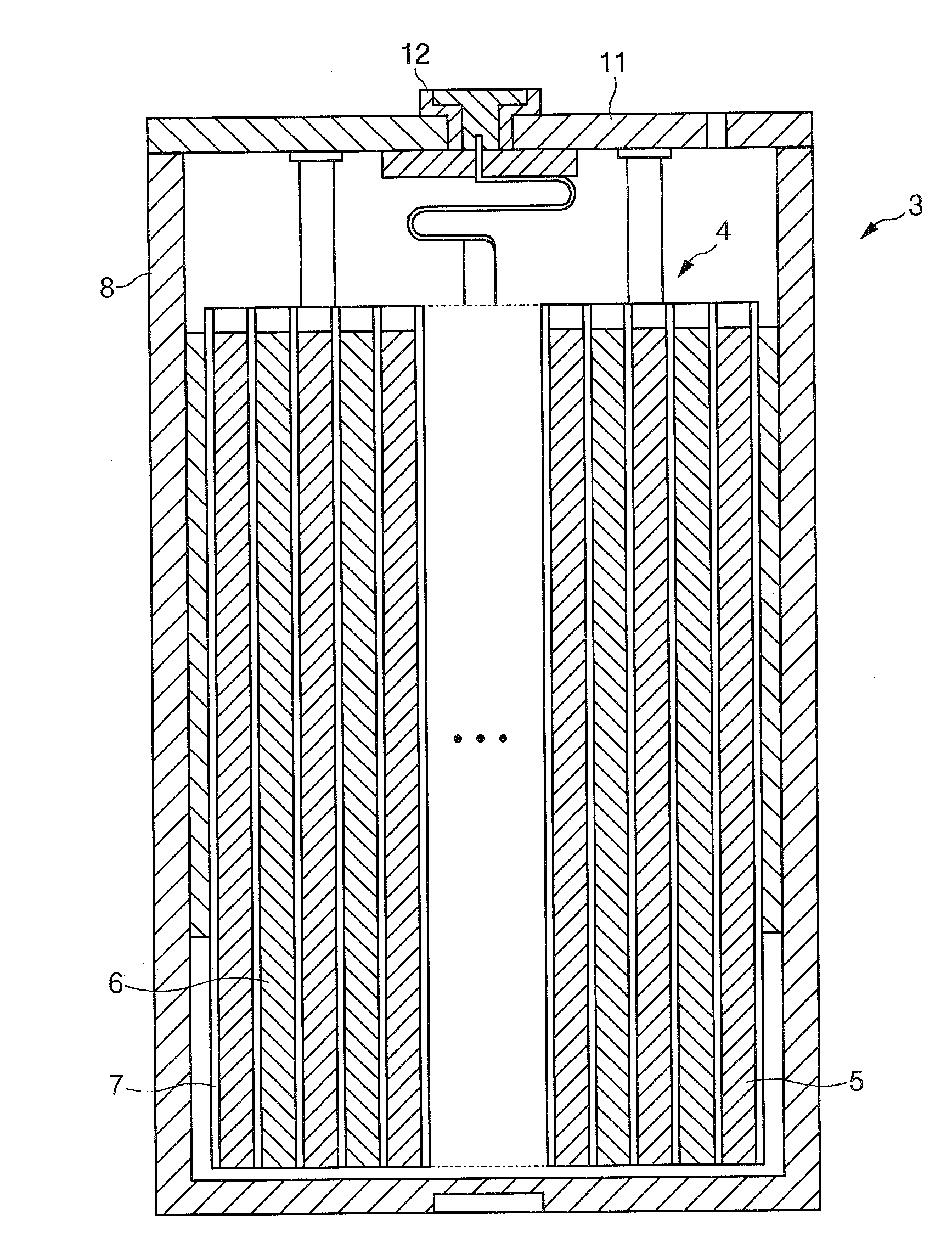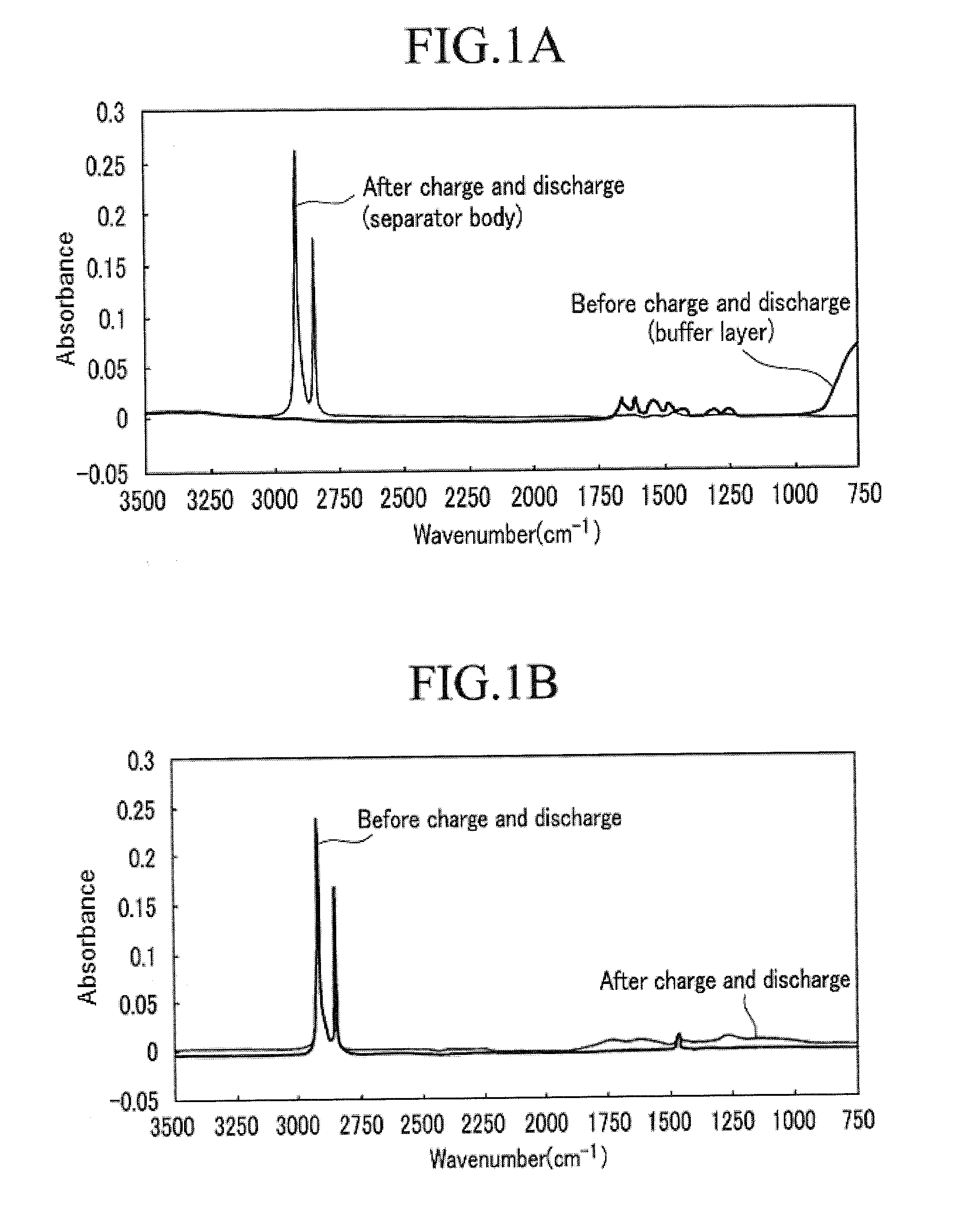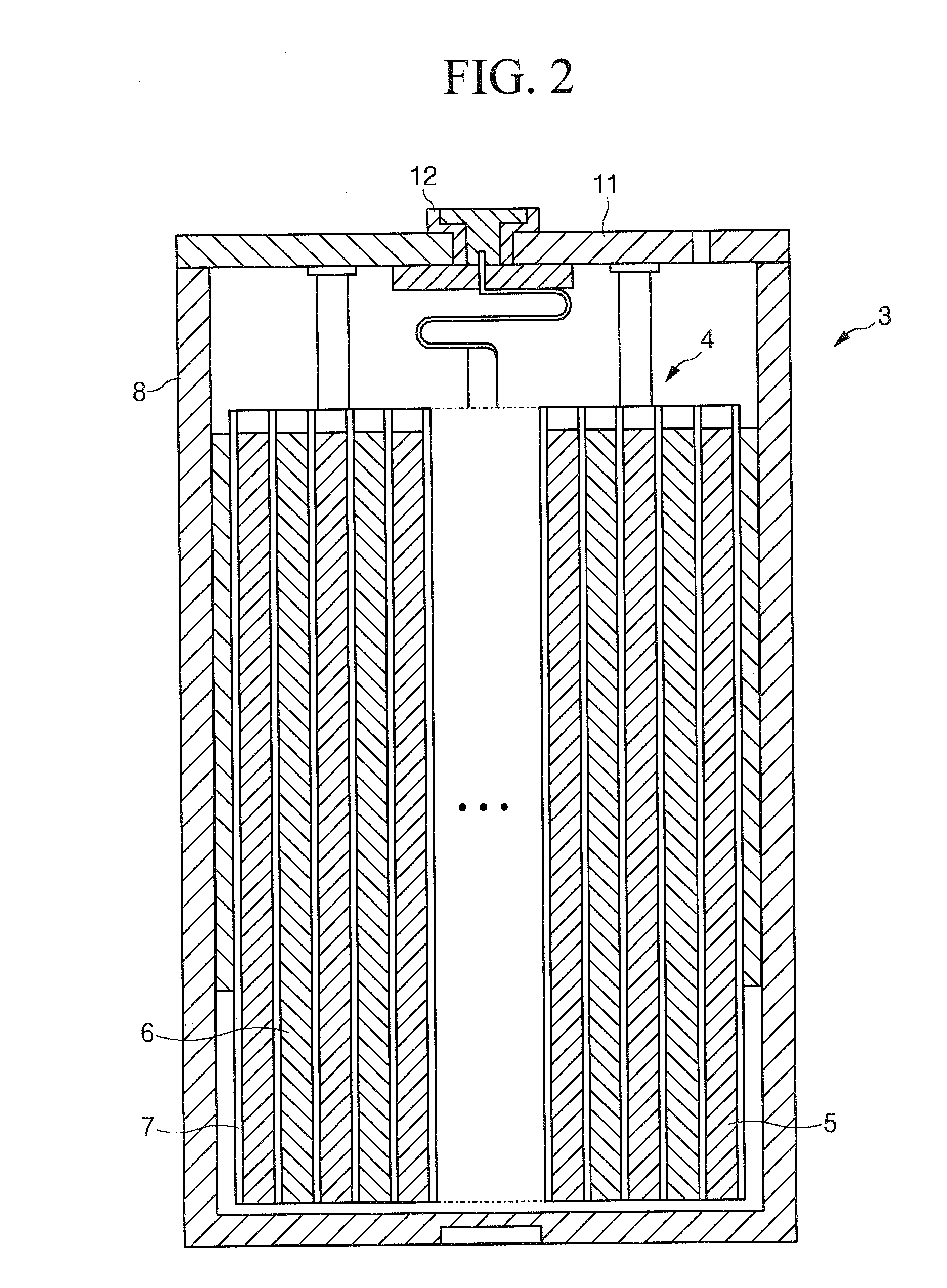Separator for non-aqueous rechargeable lithium battery
- Summary
- Abstract
- Description
- Claims
- Application Information
AI Technical Summary
Benefits of technology
Problems solved by technology
Method used
Image
Examples
examples 1 to 9
[0068]3 parts by weight of N-methyl-2-pyrrolidone solution in which a binder of polyvinylidene fluoride (manufactured by GURYE CHEMICAL CO., LTD. #1100) was dissolved, 95 parts by weight of LiCoO2, and 2 parts by weight of conductive carbon were mixed to provide a positive electrode slurry. The positive electrode slurry was uniformly coated on a 15 μm-thick Al-foil, and dried to provide a positive electrode. The weight ratio of LiCoO2:conductive carbon:polyvinylidene fluoride was 95:2:3.
[0069]A mixture of lithium vanadium oxide (LVO) powder and carbon material powder was used as a negative active material. 90 parts by weight of the mixture was mixed with 10 parts by weight of a polyvinylidene fluoride as a binder, and dispersed in N-methyl-2-pyrrolidone to provide a negative electrode slurry. The negative electrode slurry was uniformly coated on a 20 μm-thick copper foil and dried to provide a negative electrode.
[0070]A polyethylene separator having a buffer layer of a composite, wh...
PUM
 Login to View More
Login to View More Abstract
Description
Claims
Application Information
 Login to View More
Login to View More - R&D
- Intellectual Property
- Life Sciences
- Materials
- Tech Scout
- Unparalleled Data Quality
- Higher Quality Content
- 60% Fewer Hallucinations
Browse by: Latest US Patents, China's latest patents, Technical Efficacy Thesaurus, Application Domain, Technology Topic, Popular Technical Reports.
© 2025 PatSnap. All rights reserved.Legal|Privacy policy|Modern Slavery Act Transparency Statement|Sitemap|About US| Contact US: help@patsnap.com



